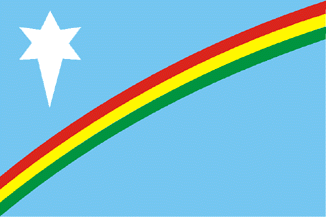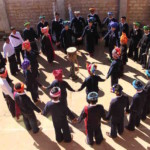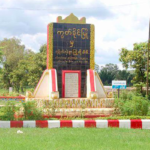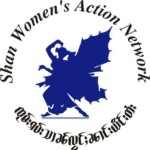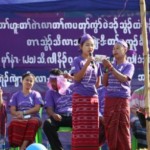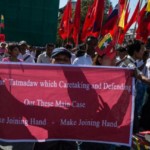Federal Government of Nagaland | November 30, 2017
To,
Ram Nath Kovind, President of the Republic of India
Honourable President,
Time and again, regretfully, the Federal Government of Nagaland has to express Naga peoples feeling towards a dignitary of your stature being the President of a great neighbouring nation, India. However, till today, all compassionate and rational efforts of the Federal Government of Nagaland seem to have turned into deaf ears of the successive Indian leaders. Therefore, this open letter is written to inform you publicly that the manner in which the President of India visiting Nagaland in the present context is devoid of propriety and cordiality.
History repeats itself the historical facts of Nagaland told to your predecessor in 2013 are here by repeated for your knowledge about lndo-Naga conflict.
- Declaration of Naga Independence: In view of the NNC leadership prevarication, a succession of the Naga delegation led by A.Z. Phizo visited Assam and India to apprise the leaders of emerging independent India the Naga stand and intention to declare Nagaland independence to the world. On the latest visit to New Delhi before the declaration of Naga Independence, Mahatma Gandhi, the founding father of modern India told the Naga delegation on 19th July 1947, “Why wait 14th August, why not today.” When the Naga delegation told him of Indian threat, he further said: “I will come to Naga Hills; I will ask them to shoot me first before one Naga is shot.” At this very critical time in Naga History, NNC leadership met on 13th August 1947 in Kohima. Consequently, on behalf of the Naga people, Naga representatives led by A.Z. Phizo declared to the world that Nagaland would stay independent on 14th August 1947, one day ahead of Great Britain granted independence to British India. For the record, the Government of British India in New Delhi and the United Nations in New York were informed by telegram. The British did not interfere in the bilateral talks between leaders of India and Nagaland.
- Nagaland and Indian Constitution: On 24th January, 1950 the Nagas to let it be known to the world that the Nagas do not accept the Constitution of Union of India before its Inaugural on 26th January, 1950. The Naga stand was communicated to the incipient Government of India, all the Foreign Ambassadors in New Delhi and the United Nations in New York. By virtue of the steps taken, no Indian Statutory Instrument or law, in whatever form or manner in which issued, has any validity over Nagaland.
- Voluntary National Plebiscite 1951: To let the world see the democratic wishes of the Naga people, on 1st January 1951, NNC informed the Government of India that the Nagas intend to conduct a voluntary national plebiscite on a day to be announced soon. The primary purpose of the plebiscite was to evidence the true desire of the Naga people be democratic process; for or against Nagaland Independence and rejection to join the Union of India. In a follow up press release on 11th April 1951, NNC invited the Government of India and the World Press to send Observers to witness Naga voluntary plebiscite to be held on 16th May 1951. Beyond all expectations, every Naga aged 15 and over, irrespective of gender, enthusiastically participated in the historic voluntary plebiscite and gave a resounding 99% verdict in favour of Independence and rejection of joining India. Henceforth NNC has been immutably entrusted with the democratic Naga Mandate. At the same time, the Nagas bestowed on NNC the accolade of the embodiment of the Naga people and the apex Naga body.
- Indian General Election 1952: Some ballot boxes in connection with India’s first democratic General Election on 25th January 1952 mysteriously turned up in Nagaland betraying India wishful thinking. NNC rightly ignored it and not a single Naga participated. Unlike the over five hundred princely states and presidencies under British India rule who acceded Indian Union, Nagaland never gave up its Independence. India was again reminded that Nagaland had o wish to join India.
- The Federal Government of Nagaland (FGN): With the authority derived from the Naga Yehzabo (Naga Constitution), Naga delegates from the four comers of the nation gathered to inaugurate the Federal Government of Nagaland on 22nd March1956 at Rüminsinyu in Rengma Region. Despite Indian Military activities, the first Joint Session of NNC and Tatars (Member of Parliament) seating proceeded safely under the circumstances. The order of the day was deliberated according to priority. Foremost was the adoption of the Naga Yehzabo already approved by NNC. Without reservation, the Tatars gave its unanimous assent. The fact is once the Tatars ratified the Yehzabo, it confers legitimacy on the authority of the Federal Government of Nagaland. And henceforth, the Centre Authority on National affairs rest solely with the Federal Government of Nagaland.
- Indian Puppet “State Government”: Any previous tentative attempts to cover up Indian aggression and the evil deeds of the army in Nagaland could no longer be sustained after 1960. The predicament of the Indian Government led bureau Chief of Indian Intelligence Mr. Sudhim Dull based in Shillong, Assam to devise the hijacking of the hitherto incoherent Naga salaried men proto-NGO by the name Naga People’s Convention (NPC) on 24th July 1960 at Dimapur in Nagaland. Through Mr. Dull, Indian government exploited the politically vulnerable NPC for its experiment. Firstly, politicize the hapless NPC to pose as the contending Naga entity representing Nagaland in the conflict with India. Secondly, stage mange India as the conciliatory party ready to be magnanimous. Thirdly, selling the scheme to the world as the marriage made in heaven. By this crude meddling in Naga internal affairs, the experiment produces the so called 16 point Agreement which created the puppet “Nagaland State government” in December 1963. As expected the cheap trickery by India did not alter the course of the war. The war goes on and by 1964, over 100,000 Naga people have lost their lives, hardly any Naga family escaped Indian army brutality.
- Present context: India while in the process of its stage managed political talks in similar manner to the above with factionalised renegade groups to resolve Indo-Naga Conflict. This once again proved that the conflict remains unresolved. On the other hand, the President of India coming to Nagaland to celebrate the puppet statehood in Nagaland is illogical and self exposure of another cheap trickery.
The final solution: Naga National Council (NNC) and the Federal Government of Nagaland (FGN) have always been ready for constructive dialogue in place of conflict. The conflict between Nagaland and India will not go away until the contending parties, namely: NNC and FGN, the first party and the Government of India, the second party could reach a definitive understanding based on mutual respects. India cannot indefinitely evade taking the final step.
Gen. (Retd.) Viyalie Metha,
Kedahge (President),
Federal Government of Nagaland
This letter was originally issued by the Federal Government of Nagaland

